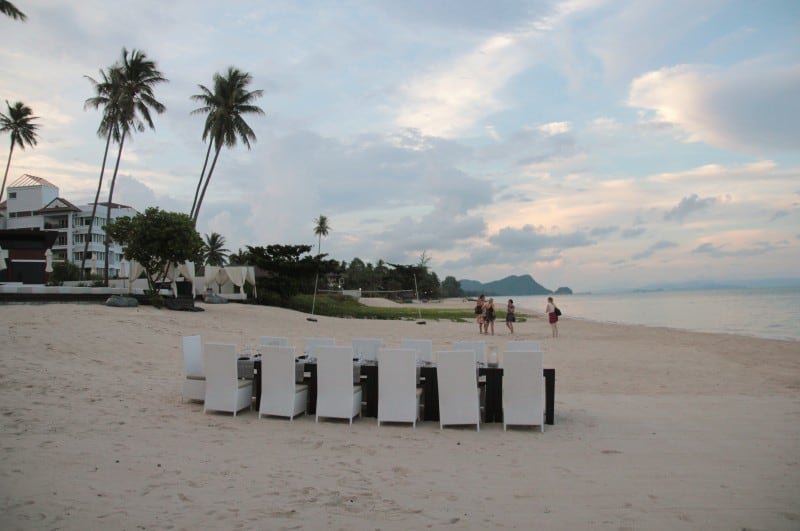Content Editor Philly explored Thailand’s hidden coastal regions on a research trip. Here she recounts her encounter with pink dolphins, yes pink, in the undiscovered district of Khanom. Beautiful, mysterious and friendly, they proved to be a highlight of the adventure.
Dara, our Thai guide, was pointing. ‘Look, look, in the water, over there.’ The boat started to rock as my travelling companions and I rushed towards the side of the boat to get a better look. ‘There.’ ‘Where?’ ‘There!’
Emerging from the deep, turquoise waters, came a pink bottleneck nose.
I was in Khanom, one of the last hidden gems of Thailand’s coast, on a research mission for Experience Travel Group. Staying at the Scandinavian style Aava Resort, set up by a Finnish couple, this was one of their favourite days out recommended to visiting guests.
‘We’re lucky today’ said Atte, the manager of the resort who was accompanying my group. ‘You normally only see one if you’re lucky.’ This time, there were three. A weather-beaten fisherman handed out some small fish for us to throw in the water. He had a wide grin on his face, evidently excited to see the dolphins.

The beach at Aava Resort, Khanom
And with good reason. There are only 2,000 pink dolphins left in the world with their numbers falling due to pollution, illegal fishing and habitat loss. Around Khanom, there are thought to be 60 and the Thai people living nearby want to protect them. Fishermen and tourist boats switch off all engines when reaching their territories and limit time with the animals so they are not too disturbed. Inquisitive creatures as they are, the dolphins often swim up and peck at some of the small bites to eat.
Their startling pink colour is due to the network of blood capillaries under the animal’s skin to help them regulate their body temperature. The dolphin is thought to be a sub-species of the White Chinese Dolphin and calves are born grey, turning a rosy colour with maturity. Seeing their bodies glide through the clear water was a sight to behold, especially when you appreciate how vulnerable they are.

Boating in a traditional fishing vessel, Khanom Thailand
‘You know a local fisherman has befriended one?’ said Dara. ‘They call him Tone which means ‘only one’ because he’s always travelling alone. He comes up to this fisherman as he recognises the boat and hangs around for fish.’ It seemed like a sweet friendship and I later learned that locals were replanting seaweed to help protect the dolphin habitat; although I might have been getting only one side of the story, the affection for the animals seemed to extend to the whole community.
Riding on, away from my encounter, it got me thinking. This hidden oasis/ refuge will only be so special as long as the crowds don’t find out about it. I’ve hesitated writing this article for a long time as, in a way, I want to keep this travel secret, exactly that: secret. At the same time, if responsible tourism in Khanom, in partnership with fishermen, government departments and tour companies, can bring some awareness for protection to this beautiful fragile creature, then perhaps there is some scope for good to be done. With the release of BBC’s Blue Planet II coming later this year, I thought it the right moment to share this knowledge; in the context of conservation and sharing an example of the inspiring stories the ocean has to tell.
If you’d like to talk to a specialist about a prospective Thailand holiday, do get in touch on 020 3411 8892 or email us here. You can see some examples of the kinds of trips we organise by looking at our Thailand portfolio. All our trips are tailor-made though, so can be changed to suit your exact needs.


